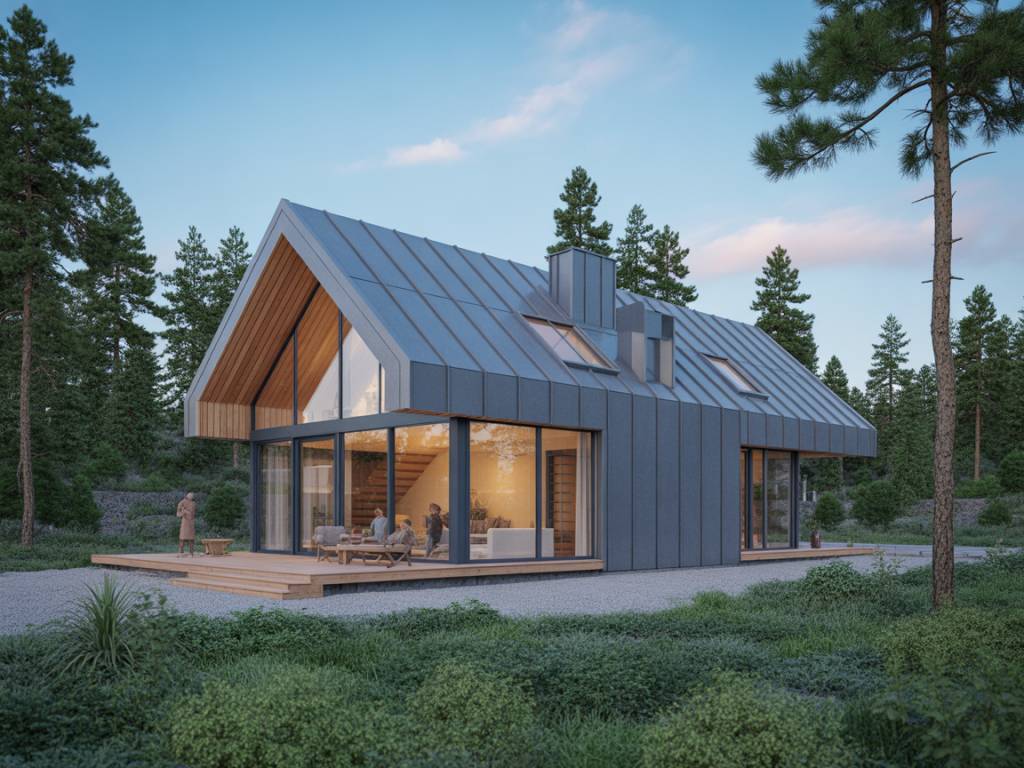What Is a Passive House?
A Passive House, also known as Passivhaus (originating from Germany), is a rigorous, voluntary standard for energy efficiency in a building. It dramatically reduces the building’s ecological footprint while providing superior comfort and indoor air quality. The design focuses on high-quality insulation, airtight construction, and mechanical ventilation. The result: homes that use up to 90% less energy for heating and cooling compared to conventional buildings.
Core Principles of Passive House Design
To understand what makes a Passive House truly energy-efficient, it’s essential to explore the core design principles. These are guided by strict performance-based criteria rather than prescriptive building approaches, making them applicable in all climates and building types.
- Thermal Insulation: Proper insulation is crucial for maintaining a consistent indoor temperature. Passive Houses use higher R-value insulation in walls, roofs, and floors to minimize heat loss.
- Airtightness: Passive Homes are virtually airtight. Extreme care is taken to seal gaps, cracks, and joints, reducing cold drafts and energy loss.
- High-Performance Windows: Typically, triple-paned windows are used, optimized for solar gain. Frames are insulated and glass coatings help manage heat flow.
- Heat Recovery Ventilation (HRV): A mechanical ventilation system with heat recovery ensures fresh, filtered air circulation while recovering up to 90% of heat from stale outgoing air.
- Thermal Bridge-Free Construction: Construction details are designed and installed to minimize areas where heat can bypass insulation, known as thermal bridges.
Why Build a Passive House?
Passive Houses are not only about energy efficiency; they provide long-term benefits that go beyond utility bills. Here are compelling reasons why more homeowners are opting to build passive buildings:
- Energy Savings: Ongoing reduction in heating and cooling bills—often up to 90% less than conventional homes.
- Consistent Indoor Comfort: No more cold spots or overheated rooms—temperature remains consistent year-round.
- Exceptional Air Quality: The ventilation system provides a continuous supply of filtered air, which is beneficial for those with allergies or respiratory conditions.
- Durability: The construction techniques involved make for solid, moisture-resistant, and durable homes.
- Resale Value: As energy efficiency becomes more desirable, Passive Houses often have higher resale values.
Design Considerations for Passive Homes
Before committing to building a Passive House, several design factors must be taken into account. These not only influence the house’s performance but also determine the upfront costs and regulatory compliance.
- Site Orientation: Maximizing solar gain is vital. South-facing windows (in the Northern Hemisphere) should be prioritized to benefit from natural heat and light.
- Climate Considerations: A Passive House must be tailored to local weather conditions. Insulation, window placement, and ventilation need to be adjusted accordingly.
- Layout Efficiency: Compact shapes reduce external surfaces, which in turn minimizes heat loss while maximizing livable space.
- Material Selection: Low-emission and sustainable materials should be chosen to align with the environmental goals of the structure.
The Cost of Building a Passive House
One of the most common questions is: how much more does it cost to build a Passive House? While initial construction costs are typically higher—ranging from 5% to 20% more compared to traditional homes—the long-term savings make up for the upfront investment.
Here is a breakdown of the potential cost distribution:
- Insulation and airtight materials: 15%-25% more expensive due to higher performance requirements.
- High-quality windows and doors: Triple-glazed windows can cost significantly more than double-glazed alternatives.
- Mechanical ventilation systems: Installing a Heat Recovery Ventilation system adds to the mechanical budget but drastically cuts operational costs.
- Certification and planning: Hiring certified Passive House consultants and conducting energy modeling adds to soft costs but ensures optimal performance and compliance.
Passive House Certification
While any home built with Passive House principles offers substantial energy savings, obtaining an official Passive House certification (through PHI or PHIUS) provides credibility and potential incentives. Certification ensures the home meets strict performance criteria.
The certification process includes:
- Design and energy modeling using software like PHPP (Passive House Planning Package)
- Construction oversight and blower-door testing for airtightness
- Verification of mechanical systems, materials, and insulation
In the U.S., Passive House Institute US (PHIUS) is the primary certifying body. They offer standards tailored to North America’s varying climate zones.
Passive House vs. Net-Zero Energy Homes
While the goals of both Passive Homes and Net-Zero Energy Homes overlap—reduced environmental impact and high energy savings—they approach these objectives differently.
- Passive House focuses on reducing energy demand through design and efficiency. It prioritizes insulation, airtightness, and minimal external energy needs.
- Net-Zero Homes aim to produce as much energy as they consume, typically through renewable energy systems such as solar panels.
Combining both principles can lead to homes that are not only ultra-efficient but also energy-independent and future-proof.
Is a Passive House Right for You?
Building a Passive House is a significant commitment, but for many, it’s a forward-thinking decision that aligns with energy efficiency, sustainability, and comfort goals. Whether you’re a homeowner planning a dream build, a developer investing in future-ready housing, or a contractor expanding your green portfolio, Passive construction offers value across the board.
Before taking the leap, consider hiring a Passive House consultant to assess feasibility, guide the design process, and ensure your home meets its performance targets. With the right planning and team, building a Passive House becomes not only achievable but also highly rewarding.
As cities and states across the U.S. move toward more stringent energy codes, early adoption of Passive House principles offers a proactive step toward a more sustainable living environment. For future homeowners and builders, investing in Passive design now means reaping lasting benefits in comfort, cost savings, and efficiency for decades to come.
